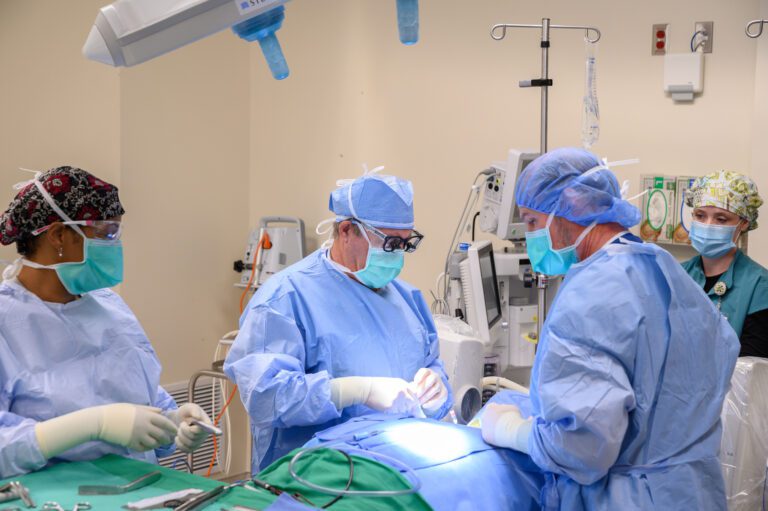Neurosurgical & Spine Procedures
Treatment From Neurosurgical & Spine Experts


Neurological & Spine Outpatient Surgery Center
The Surgical Institute of Alabama is a premier ambulatory surgery center for treating neurological & spine conditions. Our neuro and spine experts treat conditions in a high-tech outpatient environment.
Anterior & Posterior Cervical Discectomy & Fusion (Neck Surgery)
Anterior & Posterior Cervical Discectomy (Neck Surgery) is a type of surgery that’s done to treat a pinched nerve or spinal cord compression. The surgeon will make the surgical incision at the front of your neck. After making the incision, the disk that’s causing the pressure and any surrounding bone spurs will be removed. Doing this may help relieve the pressure on the nerve or spinal cord.
Lumbar Microdiscectomy & Decompression
Lumbar discectomy is a type of surgery to fix a disc in the lower back. This surgery uses smaller cuts (incisions) than an open lumbar discectomy. Decompression is a surgical procedure that is performed to alleviate pain caused by pinched nerves (neural impingement).
Lumbar Fusion (Back Surgery)
Spinal fusion, also called spondylodesis or spondylosyndesis, is a neurosurgical or orthopedic surgical technique that joins two or more vertebrae. This procedure can be performed at any level in the spine and prevents any movement between the fused vertebrae.
Lumbar Laminectomy (Back Surgery)
Lumbar laminectomy, also called open decompression, is a surgical procedure performed to treat the symptoms of central spinal stenosis or narrowing of the spinal canal. The surgery involves removal of all or part of the lamina (posterior part of the vertebra) to provide more space for the compressed spinal cord and/or nerve roots.
Cervical Arthroplasty (Neck Surgery)
Cervical Arthroplasty is a procedure involving the full replacement of a disc in your neck. When the space between your vertebrae becomes too narrow, part of your vertebrae or your cervical disc can press on your spinal cord or spinal nerves, causing you pain, numbness, or weakness. When these symptoms do not respond to nonsurgical types of treatment, disc surgery may be recommended.
Surgery to Repair Herniated & Bulging Discs
Discectomy is the most common surgery used for herniated disc in the lumbar region. In this procedure, the portion of the disc that is causing the pressure on your nerve root is removed. In some cases, the entire disc is removed.
Carpal Tunnel Release
Carpal tunnel release is surgery to treat carpal tunnel syndrome. Carpal tunnel syndrome is pain and weakness in the hand that is caused by pressure on the median nerve in the wrist.
Ulnar Nerve Repair
Ulnar nerve release surgery is a procedure for cubital tunnel syndrome – also known as ulnar nerve entrapment. Cubital tunnel syndrome is a condition in which nearby tissue puts pressure on the nerve inside the cubital tunnel, a narrow space through which the ulnar nerve passes around the elbow.
Minimally Invasive Spine Surgery
Minimally invasive spine surgery is a type of surgery on the bones of your spine (backbone). This type of surgery uses smaller incisions than standard surgery. This often causes less harm to nearby muscles and other tissues. It can lead to less pain and faster recovery after surgery.
Spinal Cord Stimulator Placement
Spinal cord stimulators consist of thin wires and a small, pacemaker-like battery pack. The electrodes are placed between the spinal cord and the vertebrae, and the generator is placed under the skin, usually near the buttocks or abdomen. Spinal cord stimulators allow patients to send the electrical impulses using a remote control when they feel pain. Both the remote control and its antenna are outside the body.



